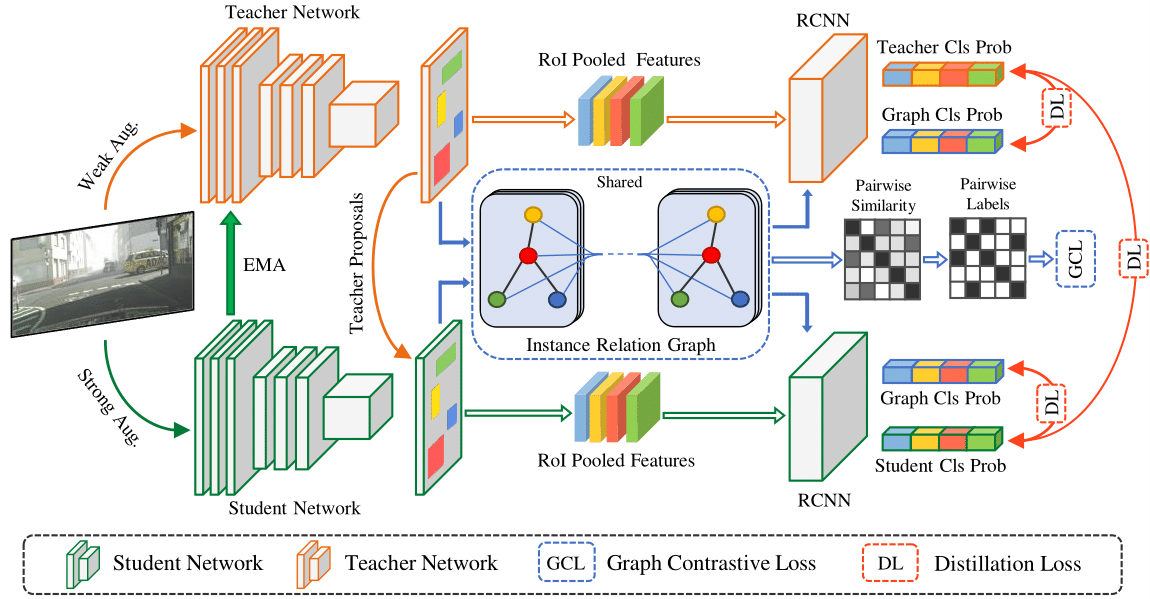Instance Relation Graph Guided Source-Free Domain Adaptive Object Detection
Unsupervised Domain Adaptation (UDA) is an effective approach to tackle the issue of domain shift. Specifically, UDA methods try to align the source and target representations to improve the generalization on the target domain. Further, UDA methods work under the assumption that the source data is accessible during the adaptation process. However, in real-world scenarios, the labelled source data is often restricted due to privacy regulations, data transmission constraints, or proprietary data concerns. The Source-Free Domain Adaptation (SFDA) setting aims to alleviate these concerns by adapting a source-trained model for the target domain without requiring access to the source data. In this paper, we explore the SFDA setting for the task of adaptive object detection. To this end, we propose a novel training strategy for adapting a source-trained object detector to the target domain without source data. More precisely, we design a novel contrastive loss to enhance the target representations by exploiting the objects relations for a given target domain input. These object instance relations are modelled using an Instance Relation Graph (IRG) network, which are then used to guide the contrastive representation learning. In addition, we utilize a student-teacher based knowledge distillation strategy to avoid overfitting to the noisy pseudo-labels generated by the source-trained model. Extensive experiments on multiple object detection benchmark datasets show that the proposed approach is able to efficiently adapt source-trained object detectors to the target domain, outperforming previous state-of-the-art domain adaptive detection methods. Code and models are provided in \href{https://viudomain.github.io/irg-sfda-web/}{https://viudomain.github.io/irg-sfda-web/}.
PDF Abstract CVPR 2023 PDF CVPR 2023 Abstract





 Cityscapes
Cityscapes
 Foggy Cityscapes
Foggy Cityscapes
 Sim10k
Sim10k